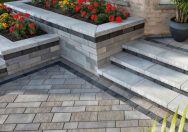Understand Air Filtration Systems Better
When it comes to air pollution and contaminants, they can be divided into three categories. There are three types of pollution: particulate pollution, biological pollution, and volatile organic compound pollution. Air filtration systems have three stages of filtration that are designed to address all types of pollution. Air filtration systems capture pollutants that are present in all common types of contaminants in the air. The pre-filter is the first stage of the air filtration system. The pre-filter captures large particulates like dust and dead skin cells that circulate in the air. When the pre-filter collects considerable particulate pollution in the air, it reduces it to smaller particulate contaminants. The HEPA filter is the second stage of the air filtration system.
All of these types of air pollution are unseen, but they are small enough to enter your lungs and cause serious damage. The inner carbon blanket is the third stage of the air filtration system. The internal carbon blanket traps volatile organic compound pollutions in the air. Volatile organic compounds are chemicals that exist in the form of a gas. They are frequently caused by paints, chemical solutions, strong cleaning products, plastics, perfumes, furniture, and other potential contaminants. The carbon blanket acts as a sponge in the third stage of the air filtration system, soaking up any gaseous chemicals circulating through the filter.

Air filtration systems are effective at removing potentially harmful pollutants and contaminants from the air. Indoor air quality has become a significant issue that affects employers, employees, and businesses with working environments worldwide. Any environmentally conscious manufacturer will think about installing an air filtration system. Airborne contaminants that may be present in the air of a manufacturing facility or workshop frequently contain carcinogenic agents that cause cancer.
Most airborne contaminants, when in contact with people regularly, are known to cause respiratory ailments. Toxic industrial particles and gases are the dangerous contaminants that pollute the air in areas where wood or manufacturing work is being done. During the working process, dust is constantly emitted into the air. Sandblasting, grinding, crushing, drilling, painting, shovelling, sweeping, and screening work can pollute the air with harmful dust particles. Fumes from certain melted materials and gases from artificial gas pollutants can contribute to the industrial air contaminants circulating in your workplace. Installing a high-quality air filtration system in your office, manufacturing facility, or even your home can thoroughly clean the air. With an air filtration system, you can protect your health and the health of those around you.
A sound air filtration system can help people with severe allergies or asthma, but it is not required for the average person. Keep in mind that research has shown that not all filters significantly reduce allergy or asthma symptoms. HEPA filter provides the most significant benefit. So, before you invest a large sum of money, make sure that you change other steps. In general, families with allergy problems should first investigate and eliminate or limit the source of the issue: pets, carpets, dust mites, and mouldy areas in the home are the first suspects.



